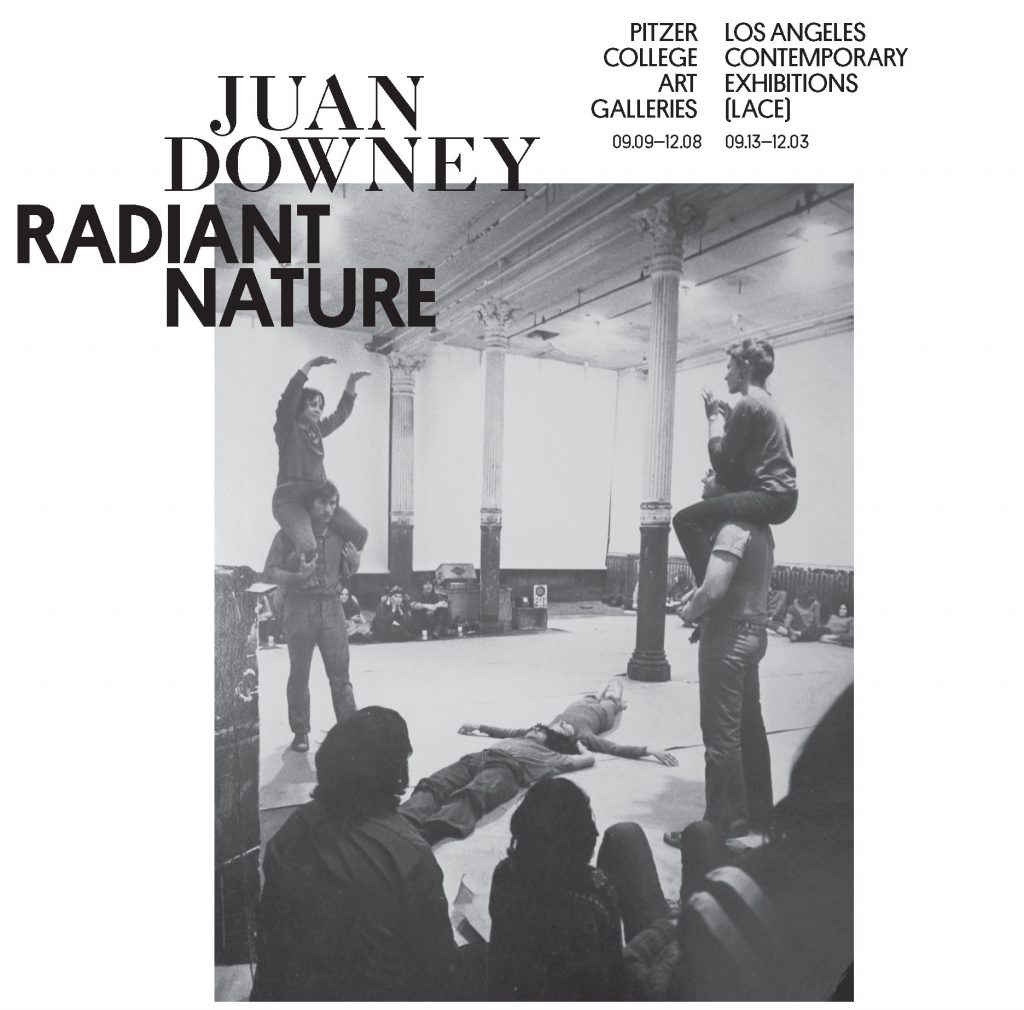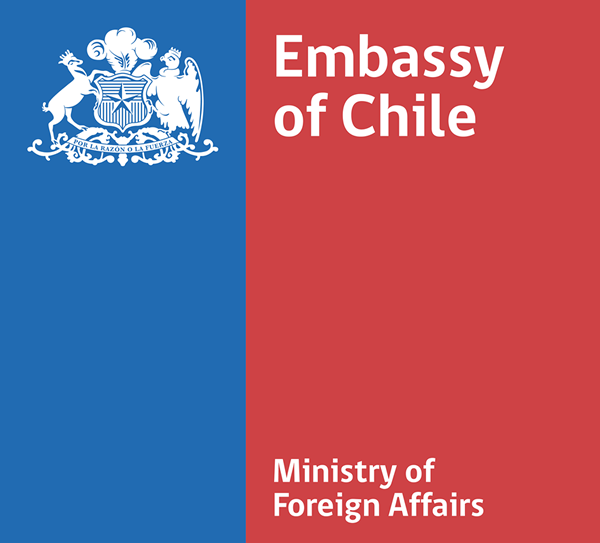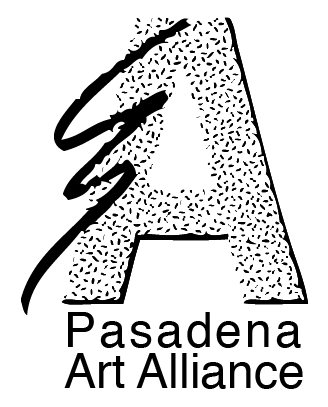
Juan Downey: Radiant Nature
Curated by Robert Crouch and Ciara Ennis
Pitzer College Art Galleries and Los Angeles Contemporary Exhibitions (LACE)
Pitzer: September 9–December 8, 2017
Opening Reception: Saturday, September 9, 3-5 p.m.
LACE: September 13–December 3, 2017
Opening Reception: Wednesday, September 13, 7-10 p.m.
Juan Downey: Radiant Nature is a two-part exhibition on the early works of Chilean-born artist Juan Downey as part of the Getty’s Pacific Standard Time: LA/LA initiative exploring the vast subject of Latin American and Latino art in dialogue with Los Angeles.
From the late 1960s until the mid-1970s, Juan Downey (b. Chile, 1940; d. New York, 1993) pioneered interactive, participatory artworks that helped shape his better-known multichannel video installations such as Video Trans Americas (1973–76) and The Thinking Eye (1974–89). The works that make up Downey’s Electronic Sculptures (1967–71); Happenings and Performances (1968–75); and Life Cycle Installations (1970–73) take radically different forms, but they share similar strategies; conceived as vehicles for interactivity, they are intended to be played with or participated in rather than passively observed.
Downey was especially interested in the potential of technology to facilitate viewer participation, transform social relations, and forge new modes of communication between organic elements or environments and machines or machinic systems. Borrowing ideas from second-order cybernetics, he conceived the organic and technological aspects of his work as relational, operating in tandem and alterable by feedback. Viewer-participants interfacing with the Electronic Sculptures, for example, may trigger an array of outcomes—sounds, colored lights, projections—depending on their actions. Similarly, Downey imagined participants in his Happenings and Performances as part of an unpredictable, amorphous system in which performers, video cameras, closed-circuit televisions, laser beams, and viewer-participants are working together. The Life Cycle Installations create an interdependence between organic and machinic elements—plants, soil, and insects and electronic sensors, cameras, and television monitors—demonstrating Downey’s belief in the potential of cybernetics to solve large-scale environmental issues by rebalancing relationships between humans, technologies, and ecologies.
Related Events:
Symposium on Cybernetics
Saturday, November 18, 10 a.m.–3 p.m.
Benson Auditorium, Pitzer College
Exhibition Publication Launch
Sunday, December 3, 1–4 p.m.
Doing Things Together: Presentation by Grant Wahlquist 2–3 p.m.
LACE
6522 Hollywood Blvd., Los Angeles
Juan Downey: Radiant Nature
Curaduría Robert Crouch y Ciara Ennis
Pitzer College Art Galleries
9 de septiembre – 8 de diciembre, 2017
Los Angeles Contemporary Exhibitions (LACE)
13 de septiembre – 3 de diciembre, 2017
Juan Downey: Radiant Nature es una exposición en dos sedes enfocada en la obra temprana del artista nacido en Chile Juan Downey que forma parte de Pacific Standard Time: LA/LA, una iniciativa de la Getty dedicada a explorar la amplía temática del diálogo entre el arte latinoamericano y latino y la ciudad de Los Ángeles.
Desde finales de la década de 1960 y hasta mediados de la siguiente, Juan Downey (Chile, 1940 – Nueva York, 1993) concibió obras de arte interactivas y participativas que antecedieron y dieron forma a sus instalaciones más conocidas de video multicanal como Video Trans Americas (1973–76) y The Thinking Eye (1974–89). Las obras que conforman las Esculturas Electrónicas de Downey (1967–71); sus Happenings y Performances (1968–75); y las instalaciones de Life Cycle (1970–73) se manifiestan de manera radicalmente distinta pero comparten estrategias similares; planteadas como vehículos de interacción, su intención es propiciar el juego y la participación en vez de la observación pasiva.
Downey estaba particularmente interesado en la capacidad de la tecnología para facilitar la participación del espectador, transformar las relaciones sociales y forjar nuevos modelos de comunicación entre elementos y ambientes orgánicos y sistemas mecanizados. A partir de teorías de la cibernética de segundo orden, planteó los aspectos orgánicos y tecnológicos de su trabajo como simbióticos, operando en conjunto y capaces de alterarse mutuamente a través de retroalimentación. Por ejemplo, dependiendo de la acción que lleven a cabo los espectadores-participantes al interactuar con las Esculturas Electrónicas pueden activar cualquiera de una serie de respuestas: sonidos, luces de colores o proyecciones. De una manera parecida, Downey imaginaba a los integrantes de sus Happenings y Performances como parte de un sistema amorfo e impredecible en el que colaboraban participantes, videocámaras, televisores en circuito cerrado, rayos láser y espectadores activos. Las instalaciones de Life Cycle articulan una simbiosis entre elementos tecnológicos y orgánicos—plantas, tierra, insectos, sensores electrónicos, cámaras y monitores televisivos—que demuestra la creencia de Downey en el potencial de la cibernética para resolver problemas ecológicos masivos al alterar el equilibrio de la relación entre humanos, tecnologías y ecologías.
Recepción de apertura
Pitzer College Art Galleries: Sábado, 9 de septiembre, 3-5 p.m.
LACE: Miércoles, 13 de septiembre, 7-10 p.m.
Simposio sobre cibernética
Sábado, 18 de noviembre 10 am-3 pm
Auditorio George Benson, Pitzer College
Lanzamiento de publicación de la muestra
Domingo, 3 de diciembre, 1-4 p.m.
LACE
6522 Hollywood Blvd., Los Angeles
Traducción: Javier Rivero
[clear]
Award-winning Writer David Goldblatt Reflects on Juan Downey: Radiant Nature
- HipLatina highlights Juan Downey: Radiant Nature
October 14, 2017 - Pitzer College Art Galleries’ upcoming Juan Downey: Radiant Nature, a 2017 Getty Pacific Standard Time LA/LA exhibition, highlighted in The Huffington Post
November 18. 2016 - artnet news highlights Pitzer Art Galleries’ upcoming exhibition, part of the Getty’s Pacific Standard Time initiative.
March 31, 2016 - The New York Times highlights the Getty’s Pacific Standard Time grant for Pitzer Art Galleries’ upcoming Juan Downey: Radiant Nature exhibition
March 15, 2016
[flex number=JBe3qYqNF2M]
[clear]
Juan Downey: Radiant Nature is part of Pacific Standard Time: LA/LA, a far-reaching and ambitious exploration of Latin America and Latino art in dialogue with Los Angeles, taking place from September 2017 through January 2018 at more than 70 cultural institutions across Southern California.

[clear]
Major support for Juan Downey: Radiant Nature provided through grants from the Getty Foundation.

[clear]
Additional support is generously provided by Dirección de Asuntos Culturales, DIRAC, Ministerio de Relaciones Exteriores, Embassy of Chile; Pasadena Art Alliance; Estrellita B. Brodsky; and Consulate of Chile in Los Angeles.


[clear]
In-kind support is provided by Human Resources Los Angeles.
[clear]
This exhibition is organized by Pitzer College Art Galleries and Los Angeles Contemporary Exhibitions (LACE).

Image:
Energy Fields (1972); Photographic documentation from video-performance, 112 Greene Street, New York, February 1972; Dimensions: 6.30 x 9.45 inches (16 x 24 cm); Courtesy of the Estate of Juan Downey; Photo: Peter Moore © Estate of Peter Moore/VAGA, New York
Energy Fields (1972); Documentación fotográfica de un video-performance realizado en 112 Greene Street, Nueva York, febrero de 1972; dimensiones: 6.30 x 9.45 pulgadas (16 x 24 cm); cortesía del Estate of Juan Downey; Fotografía: Peter Moore © Estate of Peter Moore/VAGA, Nueva York.
More Pacific Standard Time: LA/LA exhibitions at the Claremont Colleges:
Pomona College
Pomona College Museum of Art presents Prometheus 2017: Four Artists from Mexico Revisit Orozco from August 29 to December 16, 2017.
Events on Saturday, September 9:
Opening reception: 5-7 p.m.
Gallery Talk with artist Rita Ponce de León and scholar and catalog essayist Daniel Garza Usabiaga: 4-5 p.m.
FMI: www.pomona.edu
Scripps College
Ruth Chandler Williamson Gallery presents Revolution and Ritual: The Photographs of Sara Castrejón, Graciela Iturbide and Tatiana Parcero from August 26, 2017 to January 7, 2018.
Events on Saturday, September 9:
Opening reception: 7-9 p.m.
Panel Discussion with the Writers: 1-2 p.m.
Tea: 2-3 p.m.
Panel Discussion with the Artists: 3-4 p.m.
FMI: rcwg.scrippscollege.edu
[clear]
 WORLD IS WATCHING – MANIFESTO
WORLD IS WATCHING – MANIFESTO